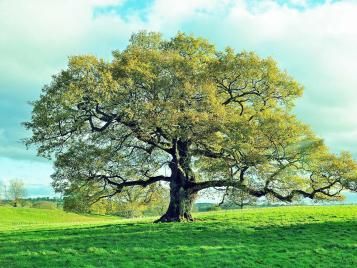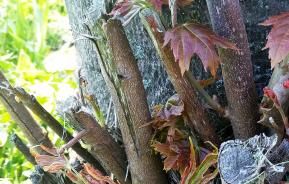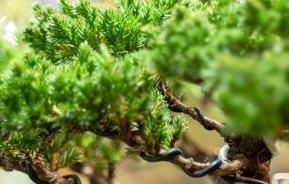Quercus robur (English oak) and Quercus petraea (Sessile oak) are familiar sights in the countryside and are spread across Europe to Russia, from the Mediterranean to southern Scandinavia. Oaks are one of the most popular trees in the country and easily recognised by its rough bark and acorns. To identify which tree is which Q. robur acorn cups are on stalks while Q. petraea are not.
Oaks are large trees which you plant for your great great grandchildren to see and benefit from. Leaves come out late April/May with rounded lobes giving dappled shade to the ground for wild flowers. They grow on most well drained soils to a height of 30-40m in a few hundred years producing a broad spreading crown making them suitable for very large gardens or country estates.
For smaller gardens Quercus robur ‘Fastigiata Koster’ might be a better choice due to its columnar growth habit, bear in mind it will reach about 15m tall. Acorns generally start appearing when the tree is about 40 years old and peak around 100 years old when 50,000 can be produced in a good year which happens every 5 years or so.

In the past oaks were used to build sailing ships because of its strength and durability plus its abundance. Now the timber is used for furniture, beams, flooring and firewood. Also oak wood has been the mainstay of the cooperage trade for centuries. Oak trees support a very large number of insect species for wild birds and their young and the acorns for squirrels, deer and mice to fatten on for the coming winter.
In medieval times commoners had the rights to pannage in forests for acorns and other nuts with their pigs, this practice is still carried out in some forests today. Mistletoe grown on oak trees is highly prized by druids and it should be cut down with a golden sickle and never touch the ground.








